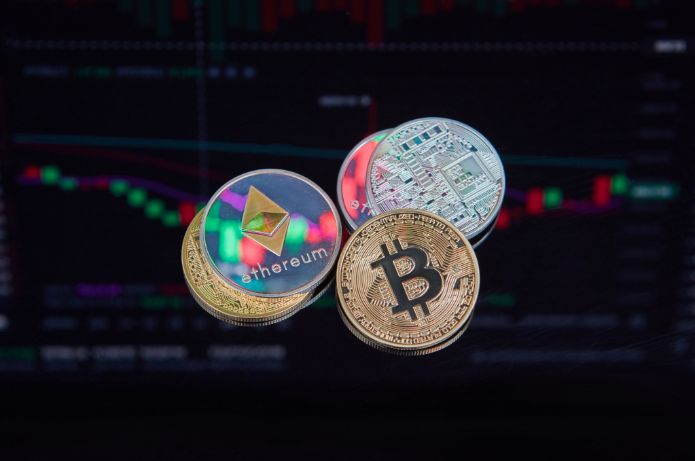Donald Trump’s second term began on January 20th, and with just over a month in office, it has already prompted a profound reconfiguration of U.S. economic policies. The president’s new guidelines for international trade relations have impacted global investments, increasing volatility in stock markets worldwide. The so-called “Trump effect” is redefining how markets react to regulatory changes and new strategies implemented by the American government.
This reconfiguration is not limited to international trade or macroeconomic policies. The crypto ecosystem is one of the most impacted sectors, undergoing significant transformation. The previous administration’s approach, marked by restrictions and caution toward digital assets, is being replaced by a vision that prioritizes technological innovation and financial freedom. This shift not only reflects the growing influence of the crypto sector in the global economy but also signals alignment with the principles of decentralization and privacy fundamental to the crypto community.
Bitcoin as an alternative to the traditional system
In recent weeks, Trump has threatened to impose a 25% tariff on products from Mexico and Canada, in addition to a 10% surcharge on items imported from China and a 25% tariff on all steel and aluminum imports destined for the U.S. These protectionist measures have created a climate of uncertainty in global markets, particularly impacting risk assets. Rising trade costs tend to fuel inflation and discourage investment, creating a challenging environment.
“Bitcoin has stood out as a reliable asset amid this volatility. While stock markets worldwide have suffered significant losses, Bitcoin has remained practically stable, reinforcing its role as a store of value in times of economic instability. This resilience demonstrates the growing maturity of the digital asset and its ability to attract investors seeking protection against traditional market uncertainties,” says Luiz Parreira, CEO of Bipa.
Faced with this scenario of drastic changes in economic and regulatory policies, the new Trump administration has adopted a more innovation-friendly stance toward the crypto sector. Recent executive orders signed by the president reflect a clear effort to reshape existing regulations and stimulate the growth of the digital asset market in the United States. This pro-crypto shift marks the beginning of a new phase for the sector, which now enjoys a more favorable environment for the development of decentralized financial technologies and the participation of large institutional investors.
Executive orders and regulatory reform
Donald Trump’s second term has brought a profound reconfiguration of U.S. regulatory policy toward the crypto ecosystem. This transformation marks a break from the restrictive approach of the Biden administration, establishing a new paradigm that prioritizes innovation and financial freedom in the sector.
Two executive orders significantly impacting the cryptocurrency and Bitcoin sector were signed by Trump in January and represent the first concrete steps of this change. The first revoked Executive Order 14067 from the Biden administration, which imposed restrictions on the crypto sector and promoted the development of a Central Bank Digital Currency (CBDC). In its place, a pro-crypto policy was established, explicitly prohibiting the creation of CBDCs and creating a “Presidential Working Group on Digital Asset Markets.” Additionally, Trump ordered all federal agencies to review their regulations on crypto assets within 30 to 60 days. This order also protects the right to self-custody and Bitcoin mining.
The second executive order focused on revoking SAB 121, eliminating the requirement for banks and financial institutions to include custodial crypto assets on their balance sheets. This measure removes one of the main barriers to traditional financial institutions entering the crypto market, allowing for a greater offering of custody services and products related to digital assets.
Ban on CBDCs
Trump’s decision to explicitly prohibit the development of CBDCs marks a drastic break from the previous administration. The new executive order not only prohibits government agencies from promoting or issuing CBDCs but also mandates the immediate termination of any projects related to these state digital currencies.
This measure was widely celebrated by the crypto community, which views CBDCs as instruments of state surveillance and government control over individual financial transactions. The prohibition reflects a political vision that values financial privacy, dollar sovereignty, and decentralization—principles aligned with the philosophy of Bitcoin and cryptocurrencies in general.
ETFs boost the market
The Bitcoin ETFs launched last year exceeded market expectations. BlackRock’s IBIT and Fidelity’s FBTC achieved a combined trading volume of $4.5 billion on their first trading day. In just 11 months, IBIT accumulated an impressive $50 billion in assets, breaking records and highlighting the growing demand for regulated products in the Bitcoin ecosystem.
In the Brazilian market for exchange-traded index funds, seven of the ten ETFs with the highest investor returns in 2024 are related to crypto assets and blockchain networks, according to research by Quantum Finance.
“ETFs play a crucial role in popularizing the crypto market by simplifying access to these assets. They eliminate the complexity of cryptocurrency custody, allowing exposure to appreciation without concerns about security and storage, making investment more accessible and attractive. ETFs are an interesting initial step, but it’s always worth remembering that they do not provide access to a fundamental characteristic of Bitcoin: the individual’s ability to self-custody. It is through self-custody that individuals can ensure their financial sovereignty,” says Caio Leta, head of research at Bipa.
The ‘Bitcoinization’ of the Financial System
The growth of Bitcoin ETFs represents not just co-optation by the traditional financial system but also a ‘Bitcoinization’ of that system. Products like BTC-denominated ETFs, ETFs of companies that have adopted the ‘Bitcoin standard,’ and debt securities aimed at purchasing Bitcoin are examples of this integration.
The market is adapting to Bitcoin’s logic and principles, transforming its traditional dynamics. This is just the initial phase of a change that could redefine the foundations of the global financial market.


